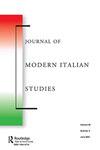漫长而曲折的道路。第二共和国时期意大利激进左翼的意识形态演变:以意大利共产党为例
IF 0.7
3区 历史学
Q1 HISTORY
引用次数: 0
摘要
摘要本文分析了第二共和国时期意大利激进左翼的主要代表——意大利共产主义重建党(prc)的思想演变。对中国意识形态本质的关注是合理的,因为作为一个“净化党”,关于党的意识形态本质的争论在确定党的身份的过程中发挥了至关重要的作用。在这个意义上,本文将党的思想演变划分为三个主要阶段。最后,这一分析强化了这样一种观点,即中华人民共和国在不断重新定义新共产主义身份的过程中所经历的意识形态变化,是由其对-à-vis意大利共产主义传统的政治、历史和文化遗产的立场决定的,这些遗产体现在中华人民共和国中。在意大利,我将主要代表我的激进主义思想和第二共和国。L 'attenzione真主安拉自然ideologica del中华人民共和国e giustificata dal脂肪切在quanto”partito purificatore”我dibattiti苏拉自然ideologica del partito汉诺svolto联合国ruolo cruciale nel processo di definizione戴尔'identita del partito。在问题意义上,问题的证据是不同的形式的进化的意识形态del partito。总之,问题分析是对中国新共产主义的第二原则的分析,问题分析是对新共产主义的定义,问题分析是对新共产主义的定义,问题分析是对新共产主义的定义,问题分析是对新共产主义的定义,问题分析是对新共产主义的定义,问题分析是对新共产主义的定义,问题分析是对新共产主义的定义,问题分析是对新共产主义的定义,问题分析是对新共产主义的定义,问题分析是对新共产主义的定义。披露声明作者未报告潜在的利益冲突。尽管1948年的意大利宪法仍然有效,但意大利的共和历史分为两个时期:第一共和国和第二共和国。因此,第二共和国一词不是指政权的改变,而是指1992-1994年期间发生的政党制度的根本突变,并开启了两极竞争的新阶段。对于一些分析人士和观察人士来说,意大利共和历史的这一阶段被认为随着2013年选举中三党竞争制度的启动而结束。Bertinotti的目标是将中华人民共和国转变为一种政党运动或“运动的运动”,与起源于公民社会的其他形式的反对资本主义制度的对话和合作,这也导致了党的组织性质的重要变化。这些因素包括:由伯蒂诺蒂的个人魅力和领导风格所激发的政党的个性化;一个不那么僵硬和更灵活的政党组织,作为促进与其他社会运动的行动能力的策略。因此,在Bertinotti的领导下,中华人民共和国出现了“双重战斗性”现象,并出现了一种新的、更不稳定的党员类型(Bertolino citation, 2004;Mule Citation2009)。3。党内的少数人反对清算Bertinotti推动的意大利共产主义的意识形态认同和组织传统,在Claudio Grassi的领导下,围绕《Ernesto》杂志组织起来(Bordandini and di Virgilio Citation2007)。中华人民共和国与美国在外交政策上的不同,不仅在于其对北约(nato)和美国在后冷战世界中的霸权的激进反对。尽管德国社民党及其继承者延续了贝林格勒的共产党的亲欧政策及其“欧洲共产主义”计划,但中国在其历史上一直是意大利左翼中欧洲怀疑主义立场的最伟大代表(Mule Citation2009, 65)。作者简介:jorge del Palacio jorge del Palacio是马德里雷胡安卡洛斯大学公共法律和政治科学系的政治思想史教授。他的学术兴趣集中在当代政治意识形态和意大利政治。他是《Geografía del populismo》(Tecnos, 2017)一书的共同编辑,也是特刊《Italia 2008-2018:¿fin de la seunda República?》的编辑。,于2020年发表在revsta de Estudios Políticos上。本文受益于2023年春季在欧洲大学学院历史与文明系的研究。本文章由计算机程序翻译,如有差异,请以英文原文为准。
The long and winding road. The ideological evolution of the Italian radical left in the Second Republic: the case of Partito della Rifondazione Comunista
ABSTRACTThis article analyses the ideological evolution of the Partito della Rifondazione Comunista (P.R.C.), the main representative of the radical left in Italy in the so-called Second Republic. The focus on the ideological nature of P.R.C. is justified because as a ‘purifying party’ the debates on the ideological nature of the party have played a crucial role in the process of defining party identity. In this sense, this article differentiates three main phases in the ideological evolution of the party. Finally, this analysis reinforces the notion that the ideological changes that the P.R.C. has undergone, in its constant redefinition of a neo-communist identity, are determined by its position vis-à-vis the political, historical, and cultural heritage of the Italian communist tradition embodied in the P.C.I.RIASSUNTOQuesto articolo analizza l’evoluzione ideologica del Partito della Rifondazione Comunista (P.R.C.), il principale rappresentante della sinistra radicale in Italia nella cosiddetta Seconda Repubblica. L’attenzione alla natura ideologica del P.R.C. è giustificata dal fatto che in quanto “partito purificatore” i dibattiti sulla natura ideologica del partito hanno svolto un ruolo cruciale nel processo di definizione dell’identità del partito. In questo senso, questo articolo evidenzia tre diverse fasi nell’evoluzione ideologica del partito. Infine, questa analisi rafforza il principio secondo cui i cambiamenti ideologici che il P.R.C. ha subito, nella sua costante ridefinizione di un’identità neocomunista, sono determinati in grande misura dalla sua posizione rispetto all’eredità politica, storica e culturale della tradizione comunista italiana incarnata dal P.C.I.KEYWORDS: communismpost-communismneo-communismanti-capitalismglobalizationneoliberalismPAROLE CHIAVE: Comunismopost-comunismoneo-comunismoanti-capitalismoglobalizzazioneneoliberalismo Disclosure statementNo potential conflict of interest was reported by the author.Notes1. Although the Italian Constitution of 1948 is still in force, Italy’s republican history is divided into two periods: the First and the Second Republic. The term Second Republic refers, therefore, not to a change of regime, but to the radical mutation of the party system that took place in the period 1992–1994 and inaugurated a new phase of bipolar competition. For some analysts and observers, this phase of Italy’s republican history is considered to have ended with the inauguration of the three-party competition system in the 2013 elections.2. Bertinotti’s aim to turn P.R.C. into a party-movement or ‘movement of movements’, in dialogue and collaboration with other forms of opposition to the capitalist system originating in civil society, also led to important changes in the organizational nature of the party. These included the personalization of the party, stimulated by Bertinotti’s charisma and leadership style; a less rigid and more flexible party organization as a strategy to facilitate the capacity for action with other social movements. Consequently, with Bertinotti’s leadership the P.R.C. opened to the phenomenon of ‘double militancy’ and the emergence of a new, more fluid and unstable, type of party membership (Bertolino Citation2004; Mule Citation2009).3. The minority of the party opposed to the liquidation of the ideological identity and organizational tradition of Italian communism promoted by Bertinotti organized around the magazine Ernesto under the leadership of Claudio Grassi (Bordandini and di Virgilio Citation2007)4. The P.R.C. differs from the P.D.S. in foreign policy not only in its radical opposition to N.A.T.O. and U.S. hegemony in the post-cold war world. While the P.D.S. and its heirs give continuity to the pro-European policy of Berlinguer’s P.C.I. and its “Eurocommunist” project, the P.R.C. has remained throughout its history the greatest exponent of a Eurosceptic position in the Italian left (Mule Citation2009, 65).Additional informationNotes on contributorsJorge del PalacioJorge del Palacio is Professor of History of Political Thought in the Department of Public Law and Political Science at the Universidad Rey Juan Carlos, Madrid. His academic interest focuses on contemporary political ideologies and Italian politics. He has been co-editor of the book Geografía del populismo (Tecnos, 2017) and editor of the special issue ‘Italia 2008–2018: ¿fin de la Segunda República?’ published in Revista de Estudios Políticos in 2020. This article has benefited from a research stay at the History and Civilization Department of the European University Institute during spring 2023.
求助全文
通过发布文献求助,成功后即可免费获取论文全文。
去求助
来源期刊

Journal of Modern Italian Studies
Multiple-
CiteScore
1.00
自引率
25.00%
发文量
66
期刊介绍:
The Journal of Modern Italian Studies (JMIS) is the leading English language forum for debate and discussion on modern Italy. This peer-reviewed journal publishes five issues a year, each containing scholarly articles, book reviews and review essays relating to the political, economic, cultural, and social history of modern Italy from 1700 to the present. Many issues are thematically organized and the JMIS is especially committed to promoting the study of modern and contemporary Italy in international and comparative contexts. As well as specialists and researchers, the JMIS addresses teachers, educators and all those with an interest in contemporary Italy and its history.
 求助内容:
求助内容: 应助结果提醒方式:
应助结果提醒方式:


